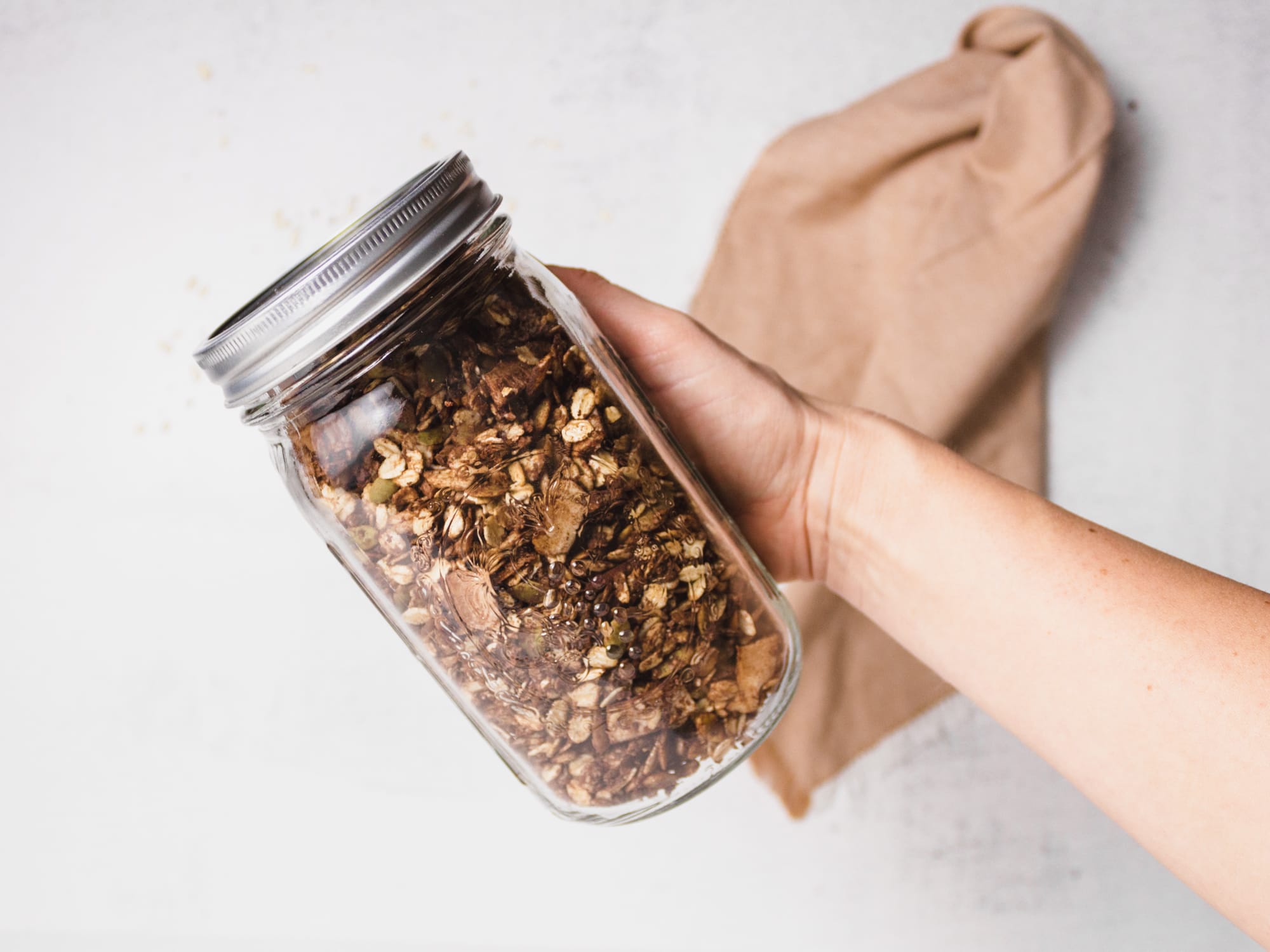
As a healthy recipe blogger (and biiig fan of granola!), I'm often asked: how long does homemade granola last? I've got the answer for you. But, I've also got a few tips and tricks to help your homemade batch stay fresh for as long as possible. Because, ultimately, I assume that's why you're here.
Here's the thing. I used to buy store-bought granola, assuming it was too difficult to make at home. However, once I started making my own, I realized how easy and customizable it was to whip up (meaning more variety in my breakfast bowls - yay!). And even more of a win, I loved that I could control exactly what ingredients were going into the mix, which meant I could limit the added sugars.
But, once homemade granola became a staple in my meal prep routine, I needed to figure out how to store it for the long haul. Here's everything I learned...
Jump to:
Does homemade granola go bad?
First off, it's important to understand that homemade granola doesn't last as long as store-bought granola. That's because store-bought granola usually contains preservatives that extend its shelf life, while homemade granola is made with all-natural ingredients from the goodness of your kitchen.
Now, the question that always comes up when making homemade granola is whether or not it can go bad. The answer is unfortunately yes. But, the extent to which it goes bad depends on a two main factors: moisture and rancidity.
- Moisture: If the granola is stored in a damp or humid environment, it can become soft and stale. Even worse, it can grow mold.
- Rancidity: The oil, nuts and seeds in your granola can become rancid over time and can give the granola an off taste. If it smells like old paint, you'll know these healthy fats have gone bad.
The good news is that homemade granola can stay fresh for weeks or even months if stored properly (keep scrolling for storage instructions!). But, if your granola ever shows visible signs of mold, smells off or tastes weird, then be safe and toss it.
How do you increase the shelf life of homemade granola?
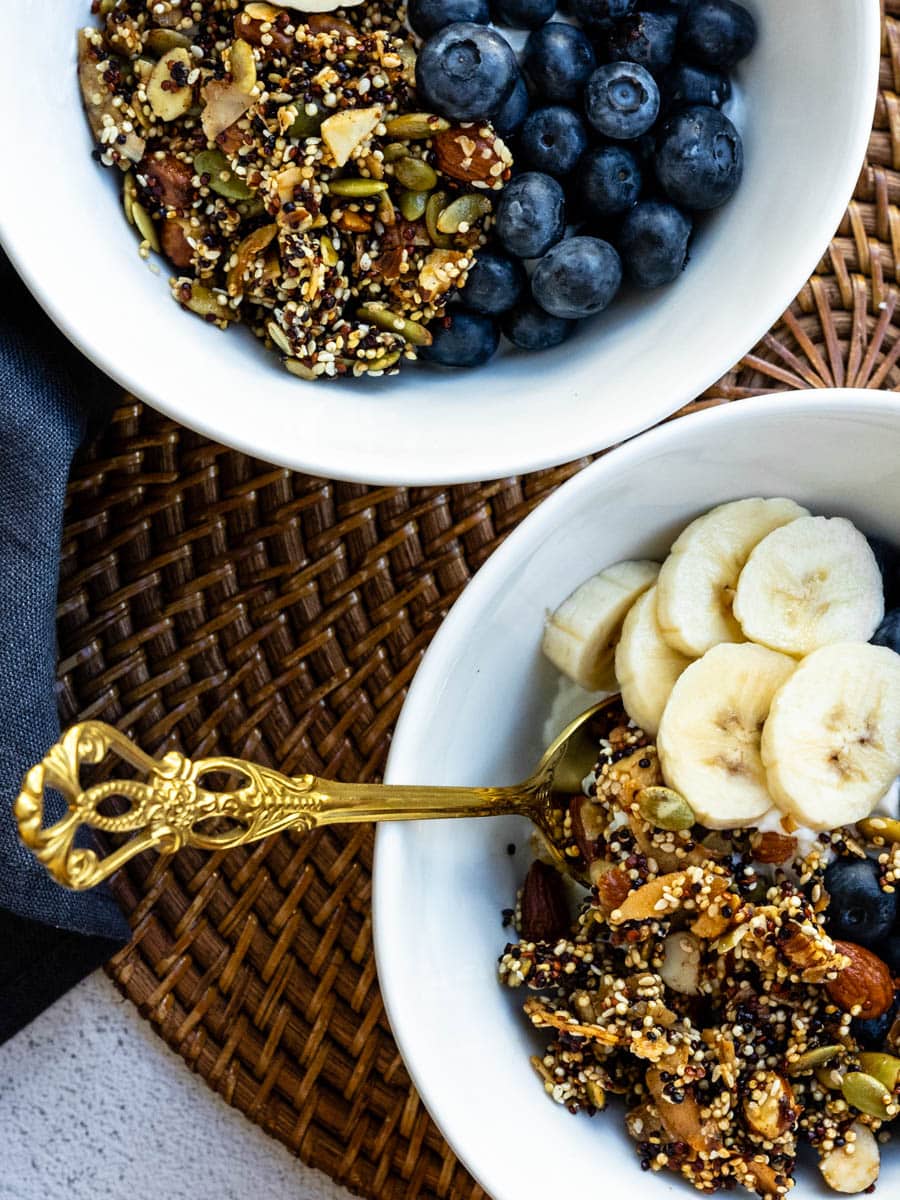
So, how do you make your homemade granola last longer? Here are the two most important things you can do:
- Store your granola properly. That means in an airtight container, like mason jars or glasslock storage containers or any other vessel with a tight-fitting lid. This will help to prevent air from getting in and causing it to go stale. I've got more details on different storage methods below.
- Start with high quality ingredients. The fresher they are, the longer your granola lasts. Check the expiration dates of add-ins like oats and dried fruit before adding them. Also, be sure to use fresh nuts and seeds since these ingredients can go rancid fairly quickly when stored in warmer temperatures.
How to store homemade granola
When it comes to storing homemade granola, there are a few different methods you can use. Each method has its own pros and cons, so it's important to understand them before deciding which one to use.
Personally, I do a mix of the methods below. I like to package a batch of granola into several smaller batches so I can freeze some and keep some at room temperature for more immediate use. Mason jars are my favorite vessel to store granola. But any airtight container or bag will do.
Below are my go-to products that will cover you for any of the storage methods below.
 Buy Now →
Buy Now →  Buy Now →
Buy Now →  Buy Now →
Buy Now → Here's a breakdown of each method:
| Storage Method | Shelf Life |
| Airtight container at room temperature | Up to 2 weeks |
| Refrigerator in airtight container | Up to 1 month |
| Freezer in airtight container | Up to 3 months |
| Freezer in vacuum-sealed bag | Up to 6 months |
Airtight container at room temperature
To store your granola using this method, follow these steps:
- Allow the granola to cool completely before placing it in an airtight container.
- Seal the container tightly and store it at room temperature. It's best to place this in a cool, dry place like your pantry or kitchen cupboard.
- Use within 2 weeks for best quality. However, if the recipe does not contain nuts, seeds or oils, it may last longer since those ingredients go rancid the fastest.
Pros:
- Does not require additional equipment (fridge or freezer)
- Easy to access, portion out and use as needed
Cons:
- Shorter shelf life compared to other methods
- More susceptible to moisture and air exposure
Refrigerator in airtight container
To store your granola in the refrigerator, follow these steps:
- Allow the granola to cool completely before placing it in an airtight container.
- Seal the container tightly and place it in the refrigerator.
- Use within 1 month for best quality.
Pros:
- If you live in hot, humid climates, your granola may not last long at room temperature, and the fridge will be a better option
- If you have add-ins (like chocolate chunks) that are melting at room temperature, the fridge may be the right choice
- Can significantly extend the shelf life of your granola
- Allows you to make larger batches and store them for later use
- Easy to access, portion out and use as needed
Cons:
- Requires space in the fridge
- Can loose crunchiness. But, if your granola has become a little soft, you can re-crisp it in the oven or air fryer. Preheat your oven to 300 degrees Fahrenheit, spread the granola out on a baking sheet, and bake for 5-10 minutes, stirring occasionally, until it's crisp and fragrant again.
Freezer in airtight container
To store your granola in the freezer, follow these steps:
- Allow the granola to cool completely before placing it in an airtight container.
- Seal the container tightly and place it in the freezer.
- Use within 3 months for best quality.
Pros:
- Can significantly extend the shelf life of your granola
- Allows you to make larger batches and store them for later use
Cons:
- Requires space in the freezer
- Can become freezer burnt if not stored properly. Fill the container as much as you can (or push as much air out of the bag as you can) to reduce the amount of air with the granola and minimize the risk of freezer burn.
- Dried fruit can become hard. It may be better to add this in after thawing.
- Not easy to portion out and use as needed, unless frozen in individual portions. To use, you'll need to place the granola on the countertop for 30-60 minutes to defrost.
- Can loose crunchiness. But, if your granola has become a little soft, you can re-crisp it in the oven or air fryer. Preheat your oven to 300 degrees Fahrenheit, spread the granola out on a baking sheet, and bake for 5-10 minutes, stirring occasionally, until it's crisp and fragrant again.
Freezer in vacuum-sealed bag
To store your granola in a vacuum-sealed bag, follow these steps:
- Allow the granola to cool completely before placing it in the bag.
- Use a vacuum sealer to seal the bag tightly pushing as much air out as possible.
- Label the bag with the date and store it in a cool, dry place.
- Use within 6 months for best quality.
Pros:
- Can significantly extend the shelf life of your granola
- Allows you to make larger batches and store them for later use
- Prevents air and moisture exposure
Cons:
- Requires space in the freezer.
- Requires a vacuum sealer.
- Not easy to access, portion out and use as needed, unless frozen in individual portions. To use, you'll need to place the granola on the countertop for 30-60 minutes to defrost.
- Dried fruit can become hard. It may be better to add this in after thawing.
- Can loose crunchiness. But, if your granola has become a little soft, you can re-crisp it in the oven or air fryer. Preheat your oven to 300 degrees Fahrenheit, spread the granola out on a baking sheet, and bake for 5-10 minutes, stirring occasionally, until it's crisp and fragrant again.
Tips for keeping homemade granola crunchy
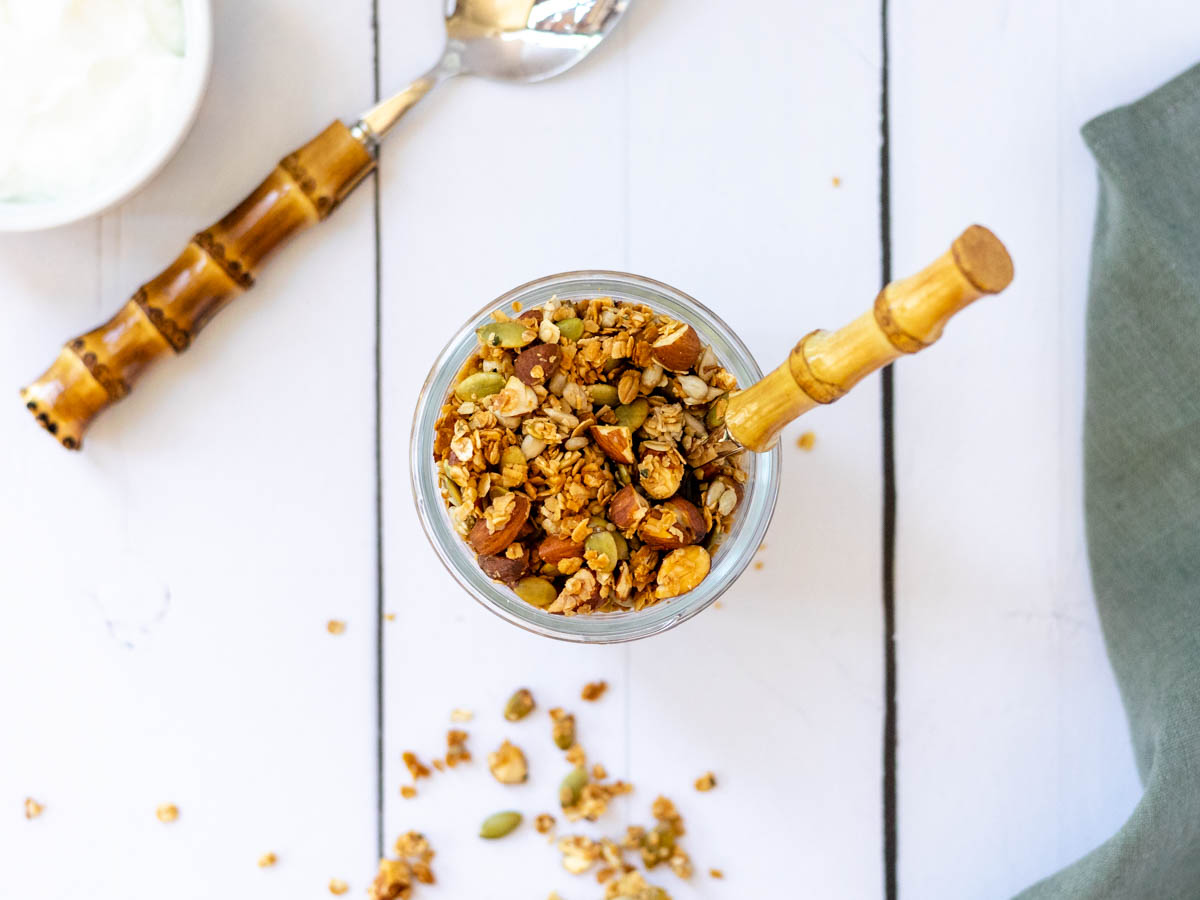
One of my favourite qualities in granola is its crunchy texture. But, it can be challenging to maintain that crunch over time. If that's something you're struggling with, here are some tips for keeping the crunch in your homemade granola.
- Allow the granola to cool completely before storing it. This will help to prevent condensation from forming in the storage container, which can cause the granola to become soggy. I'm talking at least 2 hours.
- Store the granola in an airtight container. This will help to prevent moisture from getting in and will keep the granola fresh for longer.
- Store the granola at room temperature. Avoid storing it in the fridge or freezer if crunch is important to you, as the moisture from the air can cause the granola to become soft.
- Add food grade desiccant packs to the storage container. Desiccant packets, which are often included in packages of new electronics or shoes, can help to absorb moisture and keep the granola crunchy. food grade desiccant packs
- Re-crisp it. If your granola has become a little soft, you can re-crisp it in the oven or air fryer. Preheat to 300 degrees Fahrenheit, spread the granola out on a baking sheet, and bake for 5-10 minutes, stirring occasionally, until it's crisp and fragrant again.
Granola recipes
Okay, now to the fun part, making homemade granola! Here are my go-to recipes.
Similar articles
Fast facts
How long does homemade granola last?
- Up to 2 weeks at room temperature
- Up to 1 month in the fridge
- Up to 6 months in the freezer
To keep it fresh for longer, make sure you're doing these things:
- Choose high-quality, fresh ingredients: The quality of your ingredients can have a significant impact on the shelf life of your granola. Opt for fresh, high-quality nuts, seeds, grains, and sweeteners to ensure the best possible flavor and texture.
- Cool completely before storing: Let your granola cool completely before transferring it to an airtight container. This will help to prevent moisture from accumulating and prolong the shelf life of your granola.
- Store in a cool, dry place: To keep your granola fresh for as long as possible, store it in a cool, dry place, away from direct sunlight or heat sources. A pantry or cupboard is an ideal location.
- Check for freshness regularly: Even with proper storage, homemade granola can still go stale or rancid over time. Check your granola regularly for any signs of spoilage, such as an off smell or taste. If your granola has gone bad, it's best to discard it and make a fresh batch.
Now that you know how long homemade granola lasts, what other foods do you want to learn about? Let me know in the comments below and I'll be sure to answer them as best I can.


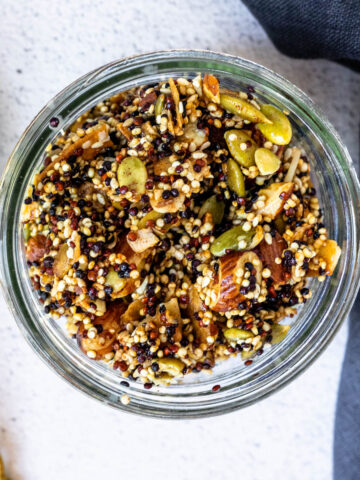
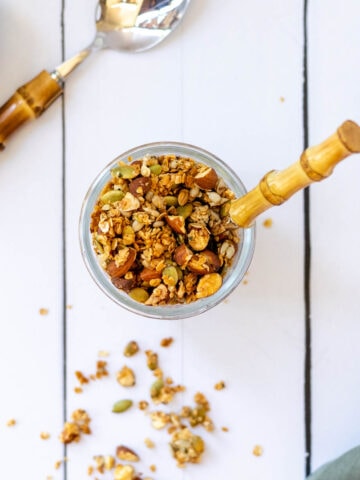
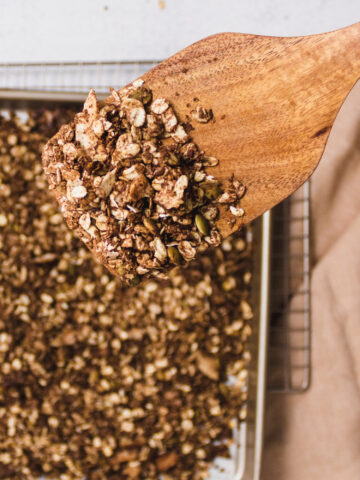




Leave a comment!